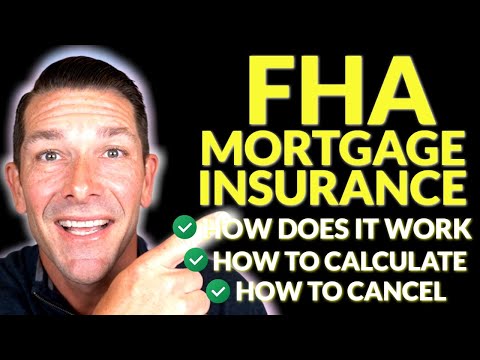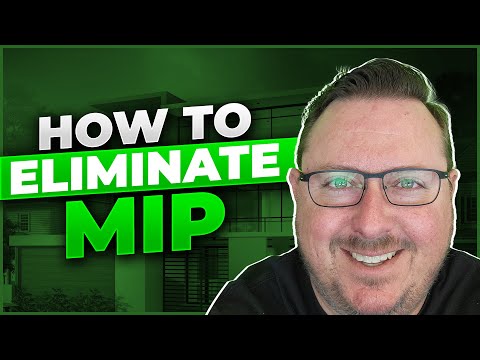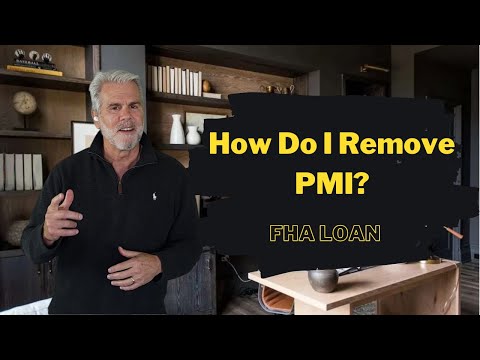When it comes to securing a home loan, navigating the complex sea of acronyms, percentages, and financial nuances can be as daunting as sailing through a storm. Particularly perplexing for many is the concept of PMI on FHA loans. Like weathering through choppy waters, it’s essential to understand the mechanisms behind these additional costs and strategies to manage them effectively.

Understanding PMI on FHA Loan: The Essentials Unrapped
Before we glimpse the horizon, let’s anchor ourselves in the reality of Private Mortgage Insurance (PMI). Contrary to what its name might suggest, PMI isn’t an insurance policy for you, but rather a safeguard for your lender in case you default on the loan. When it comes to Federal Housing Administration (FHA) loans specifically, what you’re dealing with is called Mortgage Insurance Premiums (MIP), not PMI—a distinction with significant differences, yet often interchanged by many borrowers.
While PMI is associated with conventional loans and can be waved goodbye when certain conditions are met, MIP is a steadfast companion on most FHA loans, often for the duration of the mortgage. It’s like the winter coat you can’t shed, no matter how the temperature rises. And as mortgage life insurance becomes a critical factor, knowing the specifics is as essential as packing a packable down jacket for a cold adventure.

The Mechanics of FHA PMI: Breaking Down the Basics
The mechanics of FHA PMI, or more accurately MIP, are intrinsic to the structure of FHA loans. Established during the Great Depression, FHA loans provided a boost to the housing market by insuring mortgages, which decreased the risk borne by lenders and allowed for more flexible qualifications for borrowers. But there’s no such thing as a free lunch—or in this case, insurance—hence the borrower pays for this protection through MIP.
Historical context of PMI on FHA loans
Historically, MIP rates have seen various adjustments, influenced by market conditions and federal housing policy changes. What has remained constant, though, is the mandatory nature of MIP for FHA loans. It’s a financial reality as enduring as Woodburn Oregon‘s historic Jesse H. Settlemier House.

| Feature | FHA Loan Mortgage Insurance (MIP) |
|---|---|
| Term | Mortgage Insurance Premiums (MIP) |
| Applicable Loans | All FHA Loans |
| Upfront MIP | Required at closing (can be financed into the mortgage) |
| Annual MIP | Required annually, divided into monthly payments |
| Duration for Loans > 15 Years | – MIP required for at least 11 years with a down payment of at least 10% – MIP required for the life of the loan with a down payment less than 10% |
| Duration for Loans ≤ 15 Years | – No 5-year minimum payment requirement – MIP can be eliminated when LTV reaches 78% |
| Removal Criteria | – 5 years of payments (for loans > 15 years and 78% LTV) – LTV ratio ≤ 78% (no time requirement for loans ≤ 15 years) |
| Cancellation | – MIP cannot be cancelled in some cases unless the FHA loan is refinanced into a conventional loan – For loans originated after June 3, 2013, MIP is required for 11 years with ≥ 10% down payment or life of the loan with < 10% down payment |
| Home Equity for Refinance | MIP required regardless of home equity amount |
| PMI Comparison | – Conventional loans require PMI when down payment < 20%; cancelled at 80% LTV – FHA requires MIP regardless of down payment amount |
| Action for PMI Cancellation | Written request to mortgage servicer once LTOV ratio falls below 80%; lender must automatically cancel PMI at 78% LTV |
PMI on FHA Loan: A Deep Dive into Cost Implications
Now, let’s plunge into the dollars and cents of it all. Unlike conventional loan PMI, which slides off like a well-worn leather jacket once you reach a certain equity threshold, FHA MIP can stick with you, creating a lasting impact on your overall loan affordability. Delving deeper:

The Inescapable Nature of FHA PMI: Lifetime vs. Traditional PMI
It’s important, dear homeowners, to comprehend the lifelong commitment you’re entering with your FHA MIP. Imagine having J&P Cycles deliver a motorcycle to your door, with the promise of lifelong service and parts—comforting, but at a consistent cost.
Explaining the concept that FHA PMI often lasts the life of the loan
In the FHA world, if you plunk down less than 10% as a down payment, you’re looking at MIP for the long haul—the entire life of the loan. However, pony up 10% or more, and you can shed those MIP payments after 11 years, much like the transformative results seen in those Wegovy before And after photos.
Contrast with PMI on conventional loans which can be cancelled
The freedom that comes with a conventional loan is the elimination of PMI once you reach that golden 20% equity mark, much like how Zac Efron’s face transformed through the years, eventually finding the right look.

Fact 1: The Evolving Landscape of FHA PMI Rates
Let’s take a moment to appreciate the evolving landscape of FHA MIP rates—everchanging, but always pertinent. Like the market itself, FHA MIP rates have undergone adjustments, with the winds of the economy and policy reforms dictating their course.
Discussion on recent changes in FHA PMI rates and what prompted these changes
Recently, FHA MIP rates have been buffeted by the twin pressures of economic stability and the drive for housing affordability. The latest changes reflect an attempt to balance the scales—keeping the FHA solvent while still reachable for average Joes and Janes.
Real examples of how these rate changes impact borrowers in 2024
Picture this: Sam, a first-time homebuyer, is looking at a modest abode in suburban America. With the recent adjustments, Sam is pleased to find that his annual MIP costs are reduced, much like finding a more affordable bridge loan for a tough financial gap.
Fact 2: The Minimum Down Payment Surprise in FHA PMI Calculations
Just when you thought you had a grip on down payments, FHA throws a curveball. The size of your down payment doesn’t just influence your loan amount; it also affects how long you’ll be saddled with MIP.
Insight into how the minimum down payment affects PMI on FHA loans
Dropping at least 10% into your home’s down payment bucket can exempt you from a lifetime of MIP, shortening that burden to a mere 11 years. It’s akin to using a cheat code to advance levels in a game faster.
Contrast with down payment requirements of other loan types and their impact on PMI
On the flip side, conventional loans don’t slap you with an eternal PMI. Once you’ve amassed enough equity, you can bid PMI adieu, much like waving goodbye to a friend after a hearty meal.
Fact 3: FHA PMI and Refinancing: The Unlocking Strategy
Refinancing can be to FHA borrowers what a master key is to locked doors. By refinancing from an FHA to a conventional loan, you may be able to eliminate MIP and reduce your monthly payments.
Strategies homeowners employ to remove or reduce PMI through refinancing
It’s a strategic play, similar to renegotiating a deal to your benefit. When conditions are ripe, and perhaps after a boost in your home’s value, refinancing could free you from the shackles of MIP.
Case studies of refinancing scenarios in 2024 to avoid or lower FHA PMI
Take Sara, for instance, who bought her home in 2021 with an FHA loan. With home prices on the rise, by 2024, she’s sitting on enough equity to refinance into a conventional loan, circumventing FHA MIP entirely—a financial glow-up worthy of the VA Irrrl program for veterans.
Fact 4: How FHA PMI Affects Your Loan-to-Value Ratios
Your loan-to-value ratio (LTV) sits at the heart of the home financing matrix. It’s the relationship status between what you owe and what your home is worth.
In-depth analysis of how FHA PMI is intertwined with the loan-to-value ratio
Your LTV determines if and when MIP can disappear. For instance, if your home’s value skyrockets, or you’ve been diligently paying off the principal, you can drop the MIP after 11 years with an initial down payment of 10% or more.
Examples of how this relationship impacts equity and refinancing options
For Denzel, who only put down 5% on his starter home, an appreciating market means his LTV improves quicker than anticipated. With a conventional refinance, he ditches the MIP and lowers his monthly expenditure—striking gold in mortgage terms.
Fact 5: The Tax Implications of FHA PMI: Not Common Knowledge
Discussing taxes may seem as dry as a bone, but knowledge here is as precious as water in a desert. MIP used to be tax-deductible, akin to finding a tax shelter in financial storms.
Expose on the tax deductibility of FHA PMI and recent legislation changes
However, the winds have shifted—the deduction for MIP phased out and has become a relic of the past. It’s a sting to your finances, not unlike realizing your insurance premium mortgage isn’t as sweet a deal as it once was.
Comparative examples of tax scenarios with and without FHA PMI deduction
Imagine Amy, a diligent saver, who bought her home in 2021. Initially, she enjoyed a tax break from her MIP. As the policy changed, so did her tax return—tightening her budget as surely as if she’d opted for a pricier mortgage life insurance policy.
Advanced Tips to Navigate FHA PMI: Insider’s Techniques
Now, for some exclusive wisdom to help you chart the MIP waters. Paying more upfront or making additional payments can reduce the lifespan of MIP on your loan. Consulting with a savvy financial advisor can help you pinpoint the best approach, much like receiving expert advice regarding an pmi calculator or understanding the nuances of Pmi meaning.
Original strategies for managing FHA PMI, including early payments and loan structuring
Let’s say there’s a bonus burning a hole in your pocket. Putting that extra cash toward your principal can not only reduce your MIP duration but also build your equity faster.
Unique perspectives from industry experts on minimizing the impact of FHA PMI
Experts may suggest you time your home purchase when the market is ripe for appreciation, thus boosting your home’s value and improving your LTV, a strategy comparable to the complexities of an insurance premium mortgage.
Conclusion: Embracing the Full Picture of PMI on FHA Loan
In conclusion, dear readers, while PMI on an FHA loan may initially seem like a thorn in your financial side, understanding its intricacies reveals a more nuanced picture. Whether you’re a seasoned homeowner or stepping onto the property ladder for the first time, strategies exist to manage, reduce, and sometimes even eliminate these extra costs.
The future outlook on FHA PMI trends suggests continued evolution. As a savvy borrower, stay informed, consult professionals, and employ strategic financial planning to navigate through these waters. Here’s to making informed decisions that pave the way to your dream home with your finances still shipshape!
Uncovering the Mysteries of PMI on FHA Loan
When you’re sifting through the maze of buying a home, stumbling upon PMI on an FHA loan might feel like a slap on the wallet. But hold your horses! We’ve got the lowdown on some jaw-dropping facts that’ll make understanding PMI on FHA loans as easy as pie.
The Eternal Sidekick
First things first, let’s talk about the Achilles’ heel of FHA loans – the PMI. It’s like that clingy sidekick in a buddy movie; once it’s there, you might have a tough time shaking it off. In most cases, PMI sticks with an FHA loan for the life of the loan. That’s right, just like How much Is Pmi insurance, it isn’t something that rides off into the sunset when you hit that magical 20% equity mark. It’s more of a permanent fixture, a bit like the unforgettable Zac Efron face that just doesn’t fade from your memory.
The Upgrade Paradox
Now, don’t get your gears grinding yet. If you ever feel like PMI is riding your back like you’re in the Tour de France, there’s a loophole. By refinancing into a conventional loan down the road, you could send that PMI packing. It might sound as complex as overhauling an engine, but it’s simpler than picking out your favorite motorcycle from J&P Cycles.
Front Row Seats
Ah, the upfront PMI fee. While it might seem like a sneaky move, the FHA loan wants its share of the pie up front. This isn’t a backstage pass to the PMI show, it’s a front-row seat, and you’re paying for the privilege from day one. However, the silver lining is that this could add a smidge to your tax deductions. Not bad, eh?
A Small Price for a Big Dream
Now, don’t let PMI throw you off your game. It’s like paying for extra toppings on your burger; it adds to the cost, but it’s worth it if it means getting the home of your dreams. Plus, with PMI on an FHA loan, you’re looking at potentially lower rates compared to conventional loans – a potential saving grace for your bank balance.
PMI’s Not-So-Secret Admirer
Here’s a quirky fact – lenders kinda love PMI. It’s the safety net that makes them swoon, knowing they’re protected if you ever hit a financial snag. Think of PMI as the unspoken wingman – it may cramp your style, but it’s got your back in the big dance of home buying.
In the vast universe of mortgages, PMI on an FHA loan can feel like a necessary evil. But with these surprising facts, understanding it is no longer like trying to solve a Rubik’s Cube blindfolded. So take the plunge, do your homework, and soon you’ll be navigating the PMI waters like a pro.

What is the PMI for an FHA loan?
For an FHA loan, PMI, also known as mortgage insurance premium (MIP), is there to make lenders grin from ear to ear in case you default. Whoops, I meant to say, it protects the lender — not your pocket!
Can you get rid of PMI on a FHA loan?
Man, wouldn’t it be swell to ditch PMI on your FHA loan? Unfortunately, unlike a high school ex, it’s not that easy to shake off. You can refinance to a conventional loan once you’ve built enough equity, but straight-up cancellation? That’s a no-go on FHA loans.
How to avoid mortgage insurance on FHA loan?
Ducking mortgage insurance on an FHA loan is like trying to dodge rain in a thunderstorm – ain’t gonna happen. The only surefire umbrella? Put down at least 10% and MIP falls off after 11 years or start with a conventional loan that drops PMI when you hit the equity sweet spot.
How can I get rid of PMI without 20% down?
Want to shake the PMI monkey off your back without a 20% down payment? It’s a stretch, but you can opt for a lender-paid PMI or a piggyback loan – though they come with their own strings attached.
How long does PMI last on FHA loan?
If you’re in an FHA loan, PMI sticks around for the life of the loan if you put less than 10% down. But if you’re more generous upfront, you could be PMI-free in just 11 years. Hang tight, it’s a bit of a marathon!
How long do I have to pay PMI on an FHA loan?
PMI on an FHA loan usually hangs around like a bad cold. If you put less than 10% down, you’re stuck with it for the loan’s life. But, hey, cough up more initially, and it can drop off after 11 years.
Can I get rid of PMI if my house value goes up?
Hoping your home’s value increase will make PMI vanish like a magician’s rabbit? Well, for FHA loans, no such luck. That trick only works with conventional loans, I’m afraid.
At what point can PMI be removed?
Typically, PMI can be removed from a conventional loan once you’ve paid down to 78% of the original value, or if you request and get approval at 80%. But remember, with an FHA loan, it’s a different ballgame.
Can PMI be removed if house value increases?
For FHA loans, rising house value won’t slide you out of PMI. But tap into a conventional loan instead, and you might just see that PMI disappear with a rise in equity. Cross your fingers and call your lender!
Can I get rid of PMI on an FHA loan without refinancing?
Getting rid of PMI on an FHA loan without refinancing is like trying to take a shortcut in a maze—there isn’t one. Your best bet is converting to a conventional loan once you’ve built up equity.
How do I get my FHA insurance removed?
To wave goodbye to FHA insurance, you’ll typically need to refinance into a conventional loan – think of it like swapping out your bulky winter gear for sleek spring layers once you’ve slimmed down on your loan-to-value ratio.
Can I remove escrow from my FHA loan?
Fancy removing escrow from your FHA loan? Tough cookies, that’s baked in. It’s like trying to order a sandwich without the bread. Probably not gonna happen unless you refinance or pay off the loan.
Why is it so hard to get PMI removed?
PMI removal being a hassle is just the way the cookie crumbles. It’s the lender’s safety net, and they cling to it like a kid to candy. Proving you’ve got enough equity or refinancing are your main escape hatches.
Why is my PMI so high?
Why’s your PMI sky-high? Could be your smaller down payment, credit score not hitting the high notes, or the type of loan having a field day with your wallet. It’s like paying extra for front-row concert tickets — there’s always a premium for the good stuff.
Is paying PMI worth it?
Is paying PMI akin to tossing money down the drain? Maybe, but it might just be your golden ticket to homeownership when that 20% down is just a dream. Think of it as the cost of getting your foot in the door.
How much is PMI on a $300000 mortgage?
Crunching numbers? PMI on a $300,000 mortgage could run you about $150 to $300 a month. Keep in mind, it’s like getting a latte at that fancy cafe — prices vary depending on what you’re ordering up.
Is PMI cheaper with FHA or conventional?
PMI — cheaper with FHA or conventional? Conventional loans usually offer thinner PMI wallets, particularly if you’ve got a decent credit score. FHA loans often saddle you with heavier PMI, regardless of your credit score street cred.
How can I get rid of PMI early?
To ditch PMI before its time, you’ve got to get crafty. Pay more on your principal, reassess your home’s value if the market’s hot, or make home improvements that boost your equity faster than a speeding bullet.
How much is PMI on a 100000 mortgage?
Curious about PMI on a $100,000 loan? You’re probably looking at $30 to $70 monthly. But like toppings on a pizza, the final amount depends on your specific loan slice.



